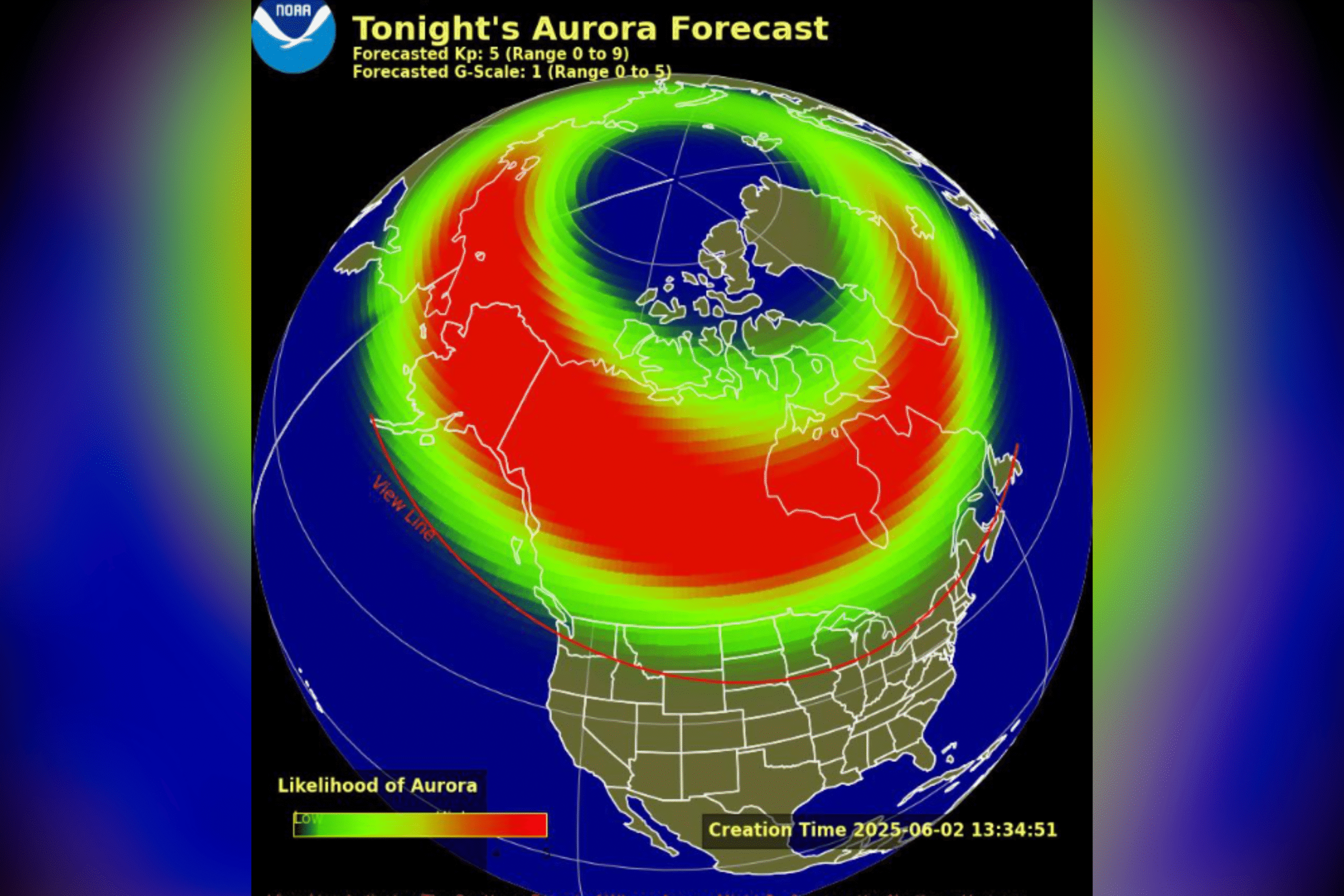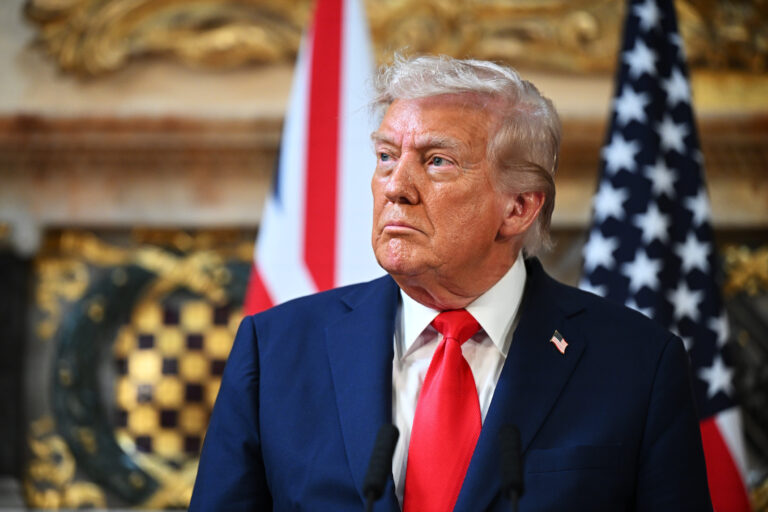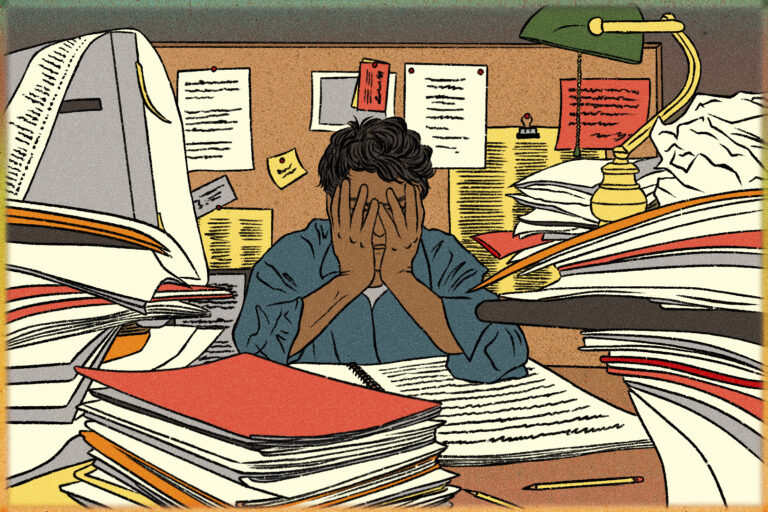
Stargazers are in for a treat as the northern lights will be visible from up to 13 states tonight, June 2.
A geomagnetic storm, caused by coronal mass ejection (CME), is heading towards Earth, which can trigger the phenomenon of the aurora borealis, also known as the northern lights.
Astronomer professor Alex Gianninas of Connecticut College, explained to Newsweek: “We are currently in the peak of the current solar cycle, Solar Cycle 25, and so increased activity at the surface of the Sun is normal. This includes geomagnetic storms that cause the Sun to expel large quantities of charged particles.
“If those are directed towards the Earth, then once they get here, the Earth’s magnetic field channels them down towards both the North and South poles and when they hit the nitrogen and oxygen in the atmosphere produce the beautiful Aurora that we see.”
The northern lights—also known as the aurora borealis—form when particles from the solar wind excite atoms in the Earth’s upper atmosphere, causing them to glow.
Aurorae manifest as curtains of light that trace the geomagnetic field lines and can vary in color depending on the species of atom being excited.
The lights can appear in a variety of colors, from green and blue to purple, pink and red, depending on the type of gas that is hit, and where in the atmosphere that gas is located, according to NASA.

SWPC NOAA
Which states will be able to see the northern lights tonight?
According to the National Oceanic and Atmospheric Administration’s Space Weather Prediction Center, the aurora will be most intense across Canada and Alaska tonight.
But, as Gianninas told Newsweek: “Besides Alaska, which is going to be the best place to potentially see the aurora tonight, the other states that are best positioned are the Northern Midwest states from Washington, northern Idaho, Montana, the Dakotas, Minnesota, Wisconsin and Michigan.
“The northernmost parts of New York, Vermont, New Hampshire and Maine might also be able to witness the aurora.”
How to watch the Northern Lights in your state
Aurora are not visible during daylight hours, and the best time to be observed from Earth is just after sunset or just before sunrise.
It also does not need to be directly overhead, but can be viewed from as far as 621 miles away if conditions are right.
Gianninas said: “Precise timing is hard to predict, but obviously it needs to be after sundown, when it’s dark, as far away from bright city lights as possible, and Mother Nature also has to cooperate and it’s got to be clear skies in order to see the aurora.”
Optimal Northern Lights Viewing Window by Region (Local Time)
Sunset times on June 2 for the states with a chance of seeing the northern lights are as follows, in local time:
- Anchorage, Alaska: 23:22
- Olympia, Washington: 21:00
- Boise, Idaho: 21:20
- Helena, Montana: 21:15
- Pierre, South Dakota: 21:19
- Bismarck, North Dakota: 21:30
- Saint Paul, Minnesota: 20:53
- Madison, Wisconsin: 20:30
- Lansing, Michigan: 21:10
- Albany, New York: 20:27
- Montpelier, Vermont: 20:28
- Concord, New Hampshire: 20:20
- Augusta, Maine: 20:17

Ruicheng Yao/Getty Images
The night of June 3 also offers opportunities to see the Aurora, but it is projected to be less intense than the night before.
As Gianninas told Newsweek: “With this increased activity, we have a reasonable expectation to see more auroral activity for many months to come.”
Do you have a tip on a science story that Newsweek should be covering? Do you have a question about space? Let us know via science@newsweek.com.




